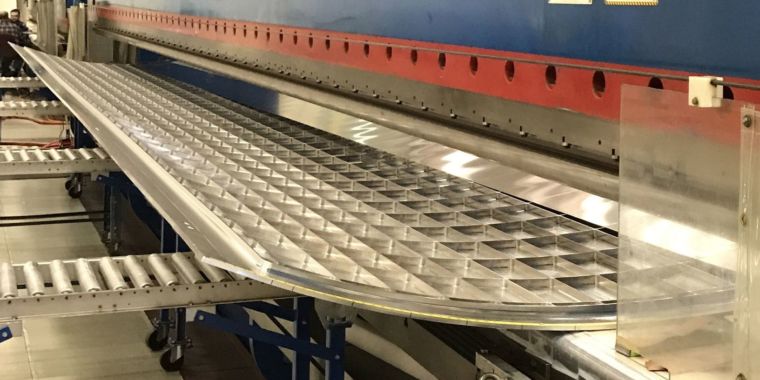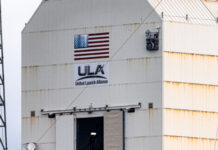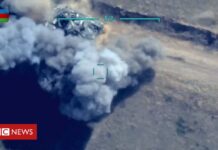

Tory Bruno/Twitter
On Thursday night, United Launch Alliance chief executive Tory Bruno shared an image of a rocket panel on Twitter and declared, “The age of Vulcan has begun…” This is one of the first pieces of metal being cut and formed for the Vulcan-Centaur rocket’s fuel tanks, Bruno later confirmed. “This is a piece of actual first flight hardware,” he told Ars.
The image showed a large machine, at least the size of a freight train car, producing a long, slightly curved panel that will form the barrel components of a fuel tank. The fabrication work was being done inside United Launch Alliance’s factory in Decatur, Alabama.
Bruno characterized the piece as being “bump formed,” a process which occurs after barrel panels are machined. During this process, the panels are formed into cylindrical arcs so that they can be welded into a barrel for fuel tanks. (More about the materials used in aerospace structures and this specific manufacturing process can be found in this NASA document).
In response to a question from Ars about how bump forming works, Bruno explained, ” A giant press ‘bumps’ the panel against two blunt knife edges, progressively ‘potato chipping’ it into a curve. This is done by hand by a highly skilled craftsman.”
The cutting of metal for a rocket that will actually fly into space suggests that United Launch Alliance remains on track toward bringing its Vulcan rocket—a successor to both its Atlas V and Delta boosters—online by 2021. However, the most complex things that must be created for new rockets generally are not fuel tanks, but propulsion and software. The company has made progress in those areas, too, by procuring BE-4 engines from Blue Origin and reusing between 40 to 60 percent of the software from the Atlas and Delta rockets. Integrating all of this will be challenging, but it is better to be working with actual hardware rather than computer simulations.
It’s a good time for United Launch Alliance to demonstrate progress. The Air Force will soon accept bids for military launch contracts from 2022 to 2026, and some of the decision criteria will come from an Air Force assessment of rocket readiness for Vulcan, as well as SpaceX’s Falcon Heavy, Blue Origin’s New Glenn, and Northrop Grumman’s Omega rockets. Vulcan appears to be ahead of all but the Falcon Heavy, which flew one mission in 2018, and has another flight coming as soon as April 7.









